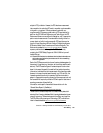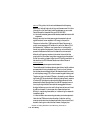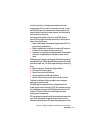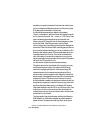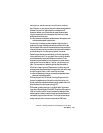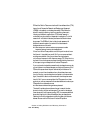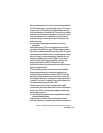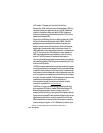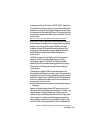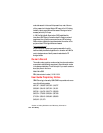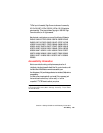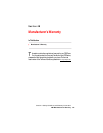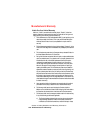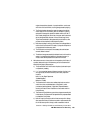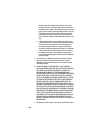
Section 4: Safety Guidelines and Warranty Information
4A: Safety 123
for exposure of workers to RF radiation [29 CFR 1910.97]. However, this
guide was later ruled to be only advisory and not mandatory. Moreover, it
was based on an earlier RF exposure standard that has now been revised.
At the present time, OSHA uses the IEEE and/or FCC exposure guidelines
for enforcement purposes under OSHA's "general duty clause" (for more
information see:
http://www.osha-slc.gov/SLTC/radiofrequencyradiation/index.html).
NIOSH is part of the U.S. Department of Health and Human Services. It
conducts research and investigations into issues related to occupational
exposure to chemical and physical agents. NIOSH has, in the past,
undertaken to develop RF exposure guidelines for workers, but final
guidelines were never adopted by the agency. NIOSH conducts safety-
related RF studies through its Physical Agents Effects Branch in
Cincinnati,Ohio.
The NTIA is an agency of the U.S. Department of Commerce and is
responsible for authorizing Federal Government use of the RF
electromagnetic spectrum. Like the FCC, the NTIA also has NEPA
responsibilities and has considered adopting guidelines for evaluating
RF exposure from U.S. Government transmitters such as radar and
military facilities.
The Department of Defense (DOD) has conducted research on the
biological effects of RF energy for a number of years. This research is now
conducted primarily at the U.S. Air Force Research Laboratory located at
Brooks Air Force Base, Texas. The DOD Web site for RF biological effects
information is listed with other sites in conjunction with a question on
other sources of information, below.
26. Who funds and carries out research on the biological effects of
RF energy?
Research into possible biological effects of RF energy is carried out in
laboratories in the United States and around the world. In the U.S., most
research has been funded by the Department of Defense, due to the
extensive military use of RF equipment such as radar and high-powered
radio transmitters. In addition, some federal agencies responsible for
health and safety, such as the Environmental Protection Agency (EPA)
and the U.S. Food and Drug Administration (FDA), have sponsored and



